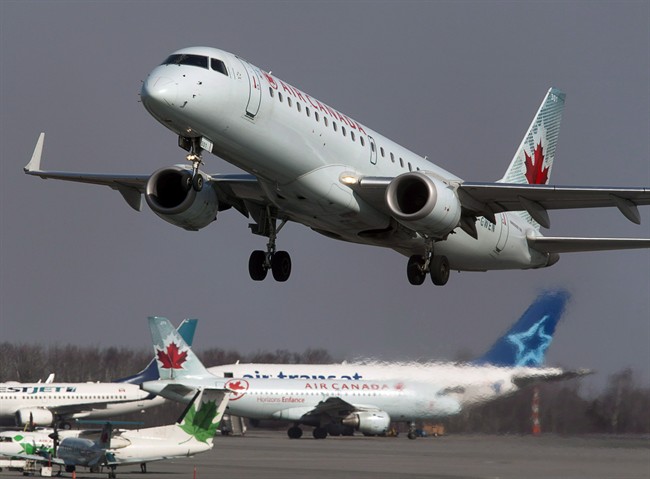It seems airlines in Canada and the United States can, and have, removed passengers for any number of reasons.

Sarah Blackwood, a singer in the Canadian group Walk off the Earth, told Global News she was forced off a United Airlines flight Wednesday after a flight attendant told her to “control” her crying son.
“I was embarrassed. I was in tears,” Blackwood said in an interview. “I couldn’t believe what was happening.”
Blackwood, who is seven months pregnant, explained that her son was “crying and squirming” and too young to be in a seat by himself.
Before a passenger can be removed from a flight, they have to be deemed unruly. That decision is ultimately left to the pilots but a Transport Canada working group did say one “key characteristic” of an unruly passenger is whether they’re disrupting the crew.
But the decision isn’t arbitrary (giving stinkeye to a flight attendant likely won’t get you tossed) and is guided, according to Westjet, by policy developed by airlines and Transport Canada.
Each airline is required to have a policy to deal with “unruly behaviour” that’s judged on a scale; the more serious the behaviour, the more serious the punishment.
- Invasive strep: ‘Don’t wait’ to seek care, N.S. woman warns on long road to recovery
- Grocery code: How Ottawa has tried to get Loblaw, Walmart on board
- ‘Super lice’ are becoming more resistant to chemical shampoos. What to use instead
- Canadian food banks are on the brink: ‘This is not a sustainable situation’
Some incidents, like “unacceptable language,” can be dealt with through a verbal warning while others, like trying to illegally enter the flight deck, can lead to criminal charges.
Transport Canada identifies four levels of unruly behaviour:
- Level 1: minor incident that may be resolved by operational personnel, such as the use of unacceptable language (no further action is required; the other levels have a requirement to report to TC).
- Level 2: incidents of a moderate nature such as the repetition of a level 1 incident or obscene or lewd behaviour (must be reported to TC).
- Level 3: incidents with serious safety concerns such as threats, tampering with emergency or safety equipment (must be reported to TC).
- Level 4: incidents that are a threat to safety. These include attempting to enter the flight deck, the use of weapons, sabotage, and incidents resulting in bodily harm (must be reported to TC).
Transport Canada leaves airlines responsible for training their employees to “recognize, react and resolve” incidents.
WestJet has a zero-tolerance policy for “disruptive or unruly passengers,” defined as a person “that interferes with the crew’s ability to conduct their duties, or that threatens the safety and security of employees or other passengers.”
An Air Canada spokesperson told Global News in an email that the airline does “have guidelines and protocols, but as these relate to security and safety we do not disclose them because that could compromise their effectiveness.”
Porter Airlines was not able to answer questions related to this story.
But some passengers, usually not in Canada, have been thrown off for seemingly more innocuous reasons.
An Oregon woman and her autistic daughter were kicked off a United Airlines flight earlier in May when the 15-year-old became agitated. After an emergency landing in Salt Lake City, Utah, officers appeared and removed the two from the flight.
“As a mom it ripped my heart out,” Donna Beegle told NBC. “I was shaking.”
In April, a San Jose woman with cancer said she was kicked off an airplane by an Alaska Airlines crew because she didn’t have a doctor’s note to fly.
People are also tossed off planes for valid reasons, however. Two Ontario women were kicked off a Sunwing Airlines flight on its way to Cuba after allegedly getting into their duty-free liquor and becoming disruptive.
– With files from John R. Kennedy






Comments